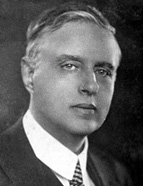

Affonso d'Escragnolle Taunay was born in Nossa Senhora do Desterro (now Florianópolis, Santa Catarina, Brazil) on 11 July 1876, grew up, and did his studies in the capital of the then Empire of Brazil, Rio de Janeiro, from where he moved only at the age of 23 to work in São Paulo. He was the son of Cristina Teixeira Leite Taunay (1854-1936) and Alfredo d'Escragnolle Taunay (1843-1899), better known as Viscount Taunay, a title bestowed upon him by Emperor Pedro II in 1889. The Taunay family came to Brazil as part of the French Artistic Mission of 1816, one of the illustrious initiatives of the monarch King João VI. On that occasion, Nicolau Antonio Taunay (a founding member of the Instituto de França [French Institute], as well as a landscape and history painter) and his brother Augusto Maria Taunay (a decorator of the Louvre Palace and sculptor at the Sèvres manufactory) accepted Joachim Lebreton's invitation to join a group that would establish the School of Fine Arts in Rio de Janeiro. This group included notable figures such as Jean Baptiste-Debret, Carlos Simão Pradier, Segismundo Neukomm, Grandjean de Montigny, and Marcos and Zeferino Ferrez. The journey to Brazil involved almost the entire family, and among Augusto Maria Taunay's children was Félix Emílio Taunay, who succeeded his father as the professor of painting at the School of Fine Arts, where he later became the director. With a strong inclination towards the humanities, he served as tutor to King Pedro II and established the Escragnolle-Taunay family through his marriage to the daughter of the Count d'Escragnolle (1785-1828), a member of a family that had arrived in Brazil in 1808. Félix Emílio played a prominent role in the cultural life of Rio de Janeiro, collaborating with Grandjean de Montigny on urbanisation and landscaping projects for the city, translating French educational works for Brazilian students, and in 1838, becoming one of the founding members of the Instituto Histórico e Geográfico Brasileiro [Brazilian Historic and Geographic Institute]. This legacy was passed on to his son Alfredo d'Escragnolle Taunay, born in 1843, a man of recognised prominence in political, military, and literary life. A graduate in military engineering, he participated in one of the key episodes of the Paraguayan War, A Retirada da Laguna [The Retreat from Laguna] , which he wrote after reaching the "backlands" of Mato Grosso, drawing on his notes and, most importantly, his memory.
This work is financed by national funds through FCT - Foundation for Science and Technology, I.P, in the scope of the projects UIDB/04311/2020 and UIDP/04311/2020.
